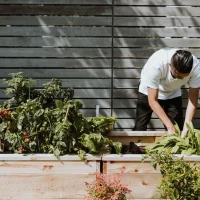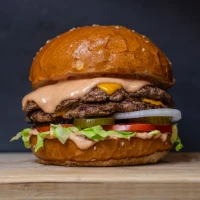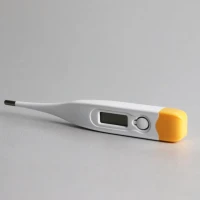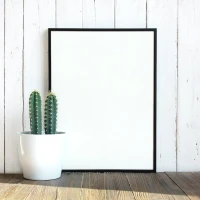The quest for the perfect, flaky, succulent salmon filet is a culinary journey many embark upon with a healthy dose of optimism and a sprinkle of trepidation. Serving up a stunning salmon dish hinges largely on nailing the perfect internal cooking temp for salmon, a feat that straddles the delicate balance between undercooked and overly done. The ideal internal temperature is your passport to a delightful salmon dining experience, and this comprehensive guide is designed to take you there, one flavorful step at a time.
When it comes to cooking salmon, precision is key. Establishing the correct internal temperature is not just a matter of taste—it’s also a safety concern. But beyond food safety, it’s about preserving the tender, flaky texture of your fish, ensuring it remains moist and flavorful. In this guide we’ll explore the ins and outs of salmon cooking temps, how to measure them accurately, and creative ways to infuse your salmon with irresistible flavors.
Understanding the Internal Cooking Temp for Salon
Before you can master the art of cooking salmon, it’s important to understand what temperature ranges are considered safe and optimal for consumption. oven baked ranch potatoes
The Significance of Temperature in Salmon Preparation
Temperature plays a pivotal role in the taste and texture of your salmon. It dictates the doneness and can significantly affect your dining experience. To understand why temperature matters, let’s delve into the science behind it.
What Happens to Salmon as it Cooks?
As salmon cooks, its proteins begin to denature and coagulate, transforming from a translucent, raw state to an opaque, firm one. The internal temperature is the beacon that indicates when this transformation has occurred to the desired extent.
Food Safety Considerations
From a food safety perspective, the U.S. Food and Drug Administration (FDA) recommends cooking fish to an internal temperature of 145°F (62.8°C). This temperature ensures that harmful bacteria are destroyed, making your salmon safe to consume.
Textural Implications
However, many chefs and culinary enthusiasts would argue that an internal temperature of 145°F can render salmon too dry for palates that prefer a more moist, tender bite. Thus, the culinary sweet spot often lies slightly lower, where the salmon is both safe and sumptuously flaky.
Perfecting Your Salmon: A Heat-Driven Journey
Perfect salmon is within reach once you get to grips with temperatures and how to measure them. Let’s explore your roadmap to perfectly cooked salmon.
The Thermometer: Your Trusty Sidekick
An instant-read thermometer is an essential tool in your quest. It offers accuracy and takes the guesswork out of gauging your salmon’s doneness. Insert the thermometer into the thickest part of the fish to get a precise reading.
The Temperatures to Aim For
For superbly cooked salmon, most culinary experts recommend an internal temperature of:
- Medium-rare: about 125°F (52°C) – flavorful and slightly translucent
- Medium: about 140°F (60°C) – widely considered the ideal internal cooking temp for salmon
- Well-done: approaching the FDA guideline of 145°F, yet risking dryness
Temperature Tips for Different Preferences
- For those who favor a softer texture, aim for the lower end of the temperature spectrum. This will ensure a moist, tender, and slightly translucent center.
- For the well-done aficionados, lean towards the FDA guideline. Be mindful, though, that this can sacrifice some moisture and softness.
The Path to Perfect Salmon: Seasoning and Cooking Techniques
Now that we are clear on temperatures, let’s focus on the companions to heat: seasoning and cooking methods that will make your salmon unforgettable.
Seasonings and Marinades: The Flavor Enhancers
A great seasoning or marinade can elevate your salmon to gourmet heights. Consider these popular options:
- Classic Dill and Lemon: A timeless combination that accentuates salmon’s natural flavors.
- Sweet and Spicy Glaze: Try a mix of honey, soy sauce, and a touch of chili for a thrilling contrast.
- Garlic and Herb Infusion: A robust selection of herbs such as thyme, rosemary, and minced garlic can infuse your salmon with aromatic depth.
Cooking Techniques to Consider
There’s no one-size-fits-all method for cooking salmon. Here are a few methods to consider, depending on your taste and equipment:
- Baking: A consistent, gentle heat in the oven yields a controlled cooking process.
- Grilling: High heat and smokiness for those who favor a bit of char.
- Pan-searing: Quick and straightforward, perfect for a crispy exterior with a tender inside.
- Sous-vide: For the tech-savvy cooks who prize precision, this method cooks salmon evenly to the exact desired temperature.
The Marriage of Salmon and Vegetables: Nutritious and Delicious
Incorporating vegetables into your salmon dish not only adds nutritional value but can complement and enhance your meal’s flavor profile.
Vegetable Pairings That Sing With Salmon
Here are some vegetable suggestions that mesh well with its flavors:
- Roasted Asparagus: A drizzle of olive oil and a sprinkle of salt, and you’ve got a side that’s as elegant as it is simple.
- Sautéed Spinach: Its mild flavor and tender texture make it a versatile companion to salmon.
- Grilled Zucchini: Brush with garlic-infused olive oil for a flavorful side.
Utilizing Vegetables for Flavor Layers
Utilize vegetables to add layers of flavor by:
- Creating a Bed: Place your salmon on a bed of sautéed greens or roasted root vegetables.
- Infusing: Add finely chopped veggies to your marinade or sauce for added texture and taste.
- Garnishing: Top your cooked salmon with a fresh vegetable salsa or slaw.
Final Thoughts: The Art and Science of Perfect Salmon
Becoming adept at cooking salmon requires a balance of accuracy with temperatures and an artful hand with seasonings and vegetables. By understanding the internal cooking temp for salmon and pairing it with the right flavors, you can achieve a culinary success that delights the senses.










